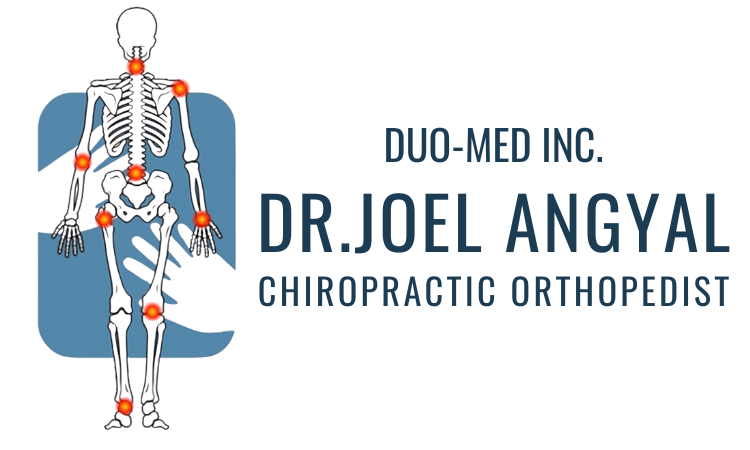Introduction
Neck Pain
Neck pain, or cervicalgia, is a common issue that can result from muscle strain, poor posture, overuse, or underlying conditions. It may also occur due to injuries, natural wear and tear from aging, nerve compression, or arthritis. Mild cases can often be managed at home with over-the-counter pain relievers, alternating heat and cold therapy, and gentle range-of-motion exercises. However, if your pain is severe, persistent, or accompanied by symptoms such as numbness, weakness, or fever, it’s important to seek medical evaluation.
Common Causes
- Muscle strain: Often related to poor posture while using a computer or phone, or sleeping in an awkward position.
- Wear and tear: Aging can cause degeneration of the joints and discs in the neck.
- Nerve compression: Herniated discs or bone spurs may put pressure on nearby nerves.
- Injuries: Whiplash and other trauma can strain soft tissues in the neck.
- Diseases: Conditions like osteoarthritis, rheumatoid arthritis, or infections may contribute to neck pain.
Back Pain
Shoulder pain is frequently caused by overuse, injury, or conditions such as rotator cuff tendinitis, bursitis, arthritis, or frozen shoulder. Mild discomfort can often be relieved with rest, ice, heat, and over-the-counter pain medications. However, severe pain, swelling, redness, or an inability to move your arm should be assessed by a doctor. A sudden, crushing pain on the left side of the body—especially when accompanied by chest discomfort or shortness of breath—may indicate a heart attack and requires immediate emergency attention.
Common Causes
- Rotator cuff problems: Inflammation or tears of the tendons supporting the shoulder.
- Bursitis: Swelling of the small fluid-filled sacs that cushion the joint.
- Arthritis: “Wear-and-tear” osteoarthritis often develops gradually with age or after injury.
- Frozen shoulder: Stiffness and pain that restrict range of motion.
- Fracture: Broken bones of the collarbone, shoulder blade, or upper arm.
- Shoulder impingement: Compression of tendons or bursa in the shoulder joint.
Referred pain: Pain originating from the neck or internal organs like the gallbladder or heart.
Low Back Pain
Lower back pain is one of the most common reasons patients seek chiropractic care. It can stem from muscle strain, improper lifting, herniated discs, or degenerative conditions of the spine. While mild pain can often be improved with rest and self-care, persistent or worsening pain—especially when nerve symptoms are present—should be professionally evaluated.
Common Causes
- Mechanical or functional injury: Often due to heavy lifting, muscle strain, or sudden twisting movements.
- Degenerative issues: Conditions such as osteoarthritis or degenerative disc disease, caused by natural aging and wear.
- Herniated or slipped disc: When the soft cushion between vertebrae bulges out and presses on a nerve.
- Spinal abnormalities: Spinal stenosis (narrowing of the spinal canal) or spondylolisthesis (vertebra shifting forward) can both cause chronic pain.
Hip Pain
Hip pain can develop from everyday wear and tear, injuries, or underlying medical conditions. Because the hips play a key role in movement and stability, even mild discomfort can impact daily life.
Common Causes
- Arthritis: Inflammation of the hip joint, commonly from osteoarthritis.
- Hip fracture: A break in the bone, often caused by a fall or impact injury
- Bursitis: Inflammation of the fluid-filled sacs that cushion the joint
- Tendonitis: Irritation or inflammation of the tendons around the hip.
- Labral tear: A tear in the ring of cartilage (labrum) that stabilizes the joint.
- Avascular necrosis: Loss of blood supply to the bone, leading to tissue breakdown.
- Muscle strain or sprain: Injury to surrounding muscles or ligaments.
- Sciatica: Radiating pain from a pinched nerve in the lower back affecting the hip and leg.
Knee Pain
Knee pain is a frequent problem that can arise from arthritis, injuries, or repetitive strain. Symptoms often include pain, stiffness, swelling, and difficulty moving or bearing weight. Minor pain may respond to the RICE method—rest, ice, compression, and elevation—along with over-the-counter medications. More serious or chronic pain may require chiropractic or medical evaluation.
Common Causes
- Arthritis: Degenerative changes like osteoarthritis wear down cartilage, causing pain and stiffness.
- Injuries and ligament sprains: Damage to ligaments such as the MCL or ACL can create instability and pain.
- Tendonitis: Inflammation of the tendons from repetitive movement, often known as “jumper’s knee.”
- Cartilage tears: Meniscus injuries can cause pain, swelling, or a clicking sensation.
- Overuse: Repeated stress from running, jumping, or other activities may irritate soft tissues around the knee.
Vertigo
Carpal Tunnel Syndrome
Carpal Tunnel Syndrome (CTS) occurs when the median nerve—which runs through a narrow passage in the wrist—becomes compressed. This nerve controls sensation and movement in parts of the hand and fingers. Symptoms often include numbness, tingling, weakness, or pain in the thumb, index, middle, and part of the ring finger. Many patients also experience reduced grip strength and wrist inflammation. Chiropractic care and other conservative treatments can often relieve pressure on the nerve and restore normal function.
Living Pain-Free Starts Here
Our Services
Working Hours
Mon, Wed & Fri:
10am – 1pm & 3pm – 7pm
Tue, Thu & Sun:
Closed
Sat:
10pm – 1pm
